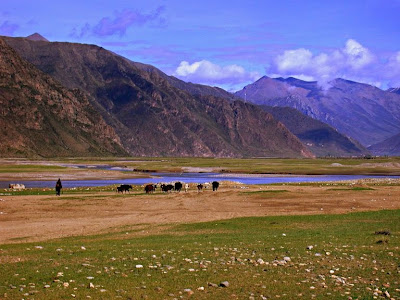Denisovans in Tibet
It is known that, like Neanderthals, the Denisovans were not exactly content to stay in one place. They also managed to share their DNA with other people groups, and the Tibetan people have a genetic variation that is shared with the mysterious Denisovans and nobody else.
Imagine the Denisovans looking around and saying, "Nice plateau here. Impressive planation surfaces, those are going to be irritating to secular geologists in a few thousand years!" Well, maybe they didn't say exactly that. Moving on.
In addition to DNA, a Denisovan fossil was found in Tibet back in 1980. Tests show that there was no DNA, but tooth dentine was examined to determined to be a close match to that of the former inhabitants of the Denisova cave way over in Siberia. Evolutionists commenced to using fundamentally flawed dating methods and using the scientific principle of Making Things Up™. Let's take a look at the biblical timeline and see how these these post-Babel Ice Age folks fit in.
 |
| Credit: Freeimages / Niko Nami |
In addition to DNA, a Denisovan fossil was found in Tibet back in 1980. Tests show that there was no DNA, but tooth dentine was examined to determined to be a close match to that of the former inhabitants of the Denisova cave way over in Siberia. Evolutionists commenced to using fundamentally flawed dating methods and using the scientific principle of Making Things Up™. Let's take a look at the biblical timeline and see how these these post-Babel Ice Age folks fit in.
The first Denisovan fossil outside Siberia has been found. While anthropologists are excited at the find, the location of the fossil in Tibet raises some puzzling questions for the evolutionary view. Secularly dated around 160,000 by flawed radiometric dating methods and with Denisovans often described as archaic hominins or evolutionary cousins to modern man, what are Christians to think of this mysterious people group? From a biblical perspective, this is a post-Babel (and completely human) fossil, which makes much more sense of the data. This fossil may also give us clues into which of the sons and/or grandsons of Noah could have been the father of the Denisovan line.To read the entire article, click on "Denisovan Fossil Found in Tibet".